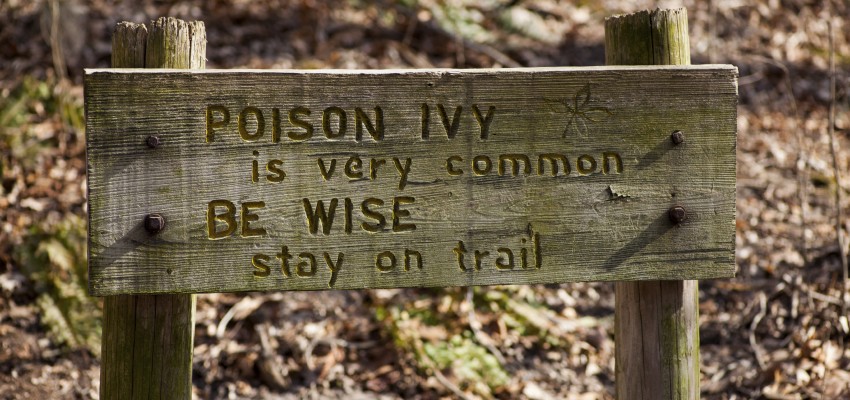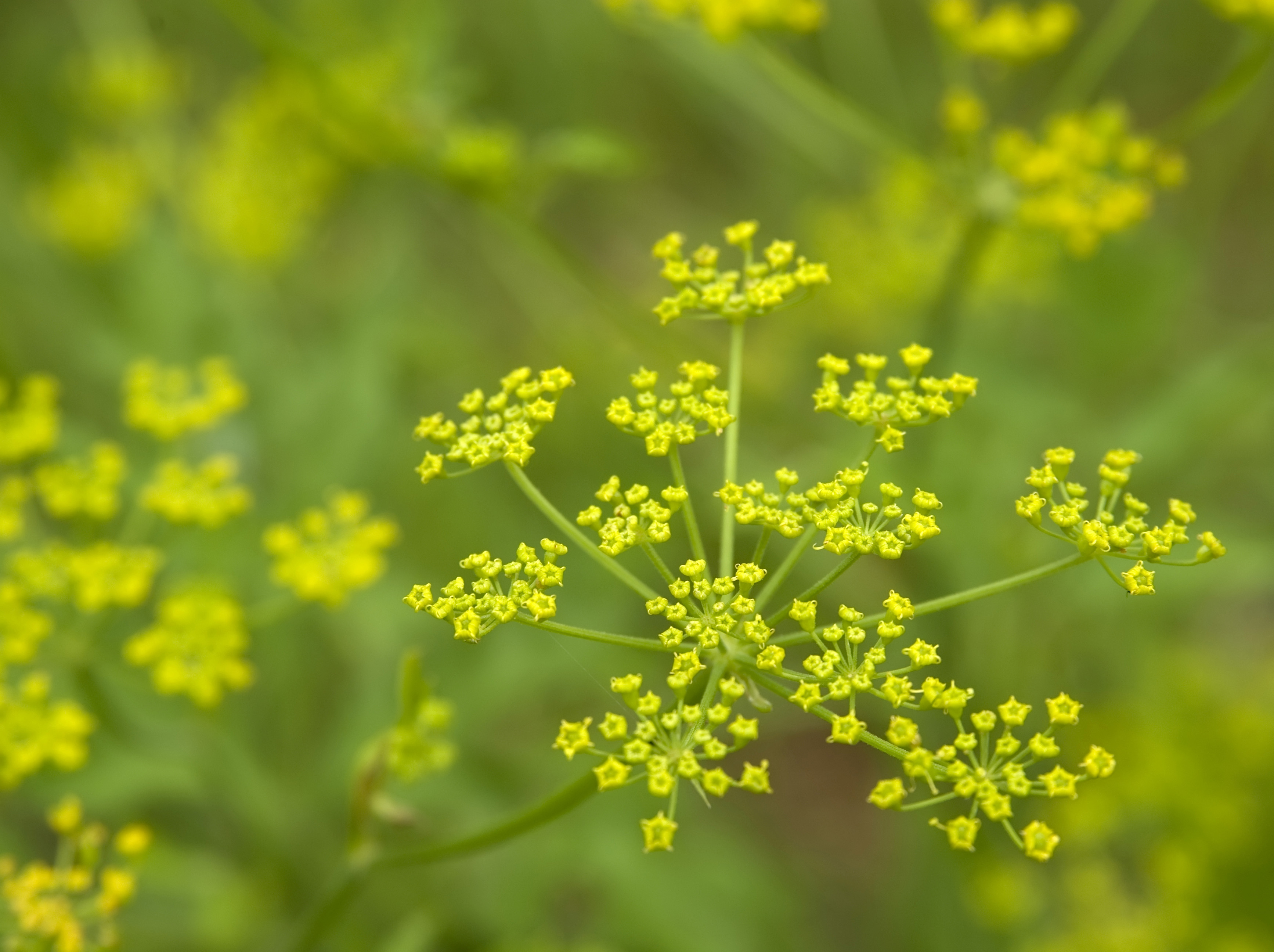Wild Parsnip
Experiencing an insurgence of late, wild parsnip has actually been in Canada and the US for more than 400 years and is part of the carrot family. While its roots are edible, it’s not advisable to harvest them since the sap in the stem can have serious side effects. Sap on the skin, when exposed to the sun, can cause very serious blistering and burns while sap that gets into your eyes can cause blindness.
Wild parsnip is always dangerous, but during flowering season even more so.
Blistering will occur within 24-48 hours of exposure and can be so serious as to result in permanent scarring. If you come into contact with a wild parsnip, use cold water to alleviate burning. Seek medical attention immediately if you get it in your eyes.
Treat the wound like a burn; try to keep blisters intact and clean affected areas regularly with soap and cold water. Disinfect open sores regularly and keep the area clean.
Poison Ivy
An oldie, but a goodie, poison ivy affects people and pets alike. For those who are susceptible to it, it can cause anything from mild irritation to burning, itchy rashes that can blister and ooze. The ivy contains an oil called urushiol that causes the damage. As it is an oil, it sticks to the skin and can then be spread all over the body as you move.
The oil can get on clothing, pet fur and other gear, so be sure to wash everything with soap and water. Wash affected areas with soap and water as soon as possible to prevent spreading.
Natural cures for poison ivy
A baking soda paste will help to alleviate the itch associated with exposure to poison ivy. Make a paste with baking soda and water and smear on the affected area.
Cook up a little oatmeal to a thick, sticky paste and apply to the rash. While you want the oatmeal to be hot, test it to ensure that it won’t burn. You can add some baking soda to the mix for even better results.
With a clean cloth, apply apple cider vinegar to the poison ivy rash. It will draw the toxins from your skin. Follow this up with an application of aloe vera gel. You can buy this at the health food store or, if you have an aloe vera plant, simply break a leaf and squeeze out the sap.
Witch hazel, found in all pharmacies and health food stores, will also alleviate itchiness and burning.
When walking in the woods or off paths, be sure to cover up to prevent exposure to poisonous plants.







I have a long history of battling poison Ivy and poison oak. Weirdest thing with me is I think that getting poison ivy results in shingles for me, which is a resurgence of chicken pox. I have noticed this on a few occasions now when being exposed and a doctor said it was shingles, and it only happens when I get poison ivy rash.
Patrick – so sorry to hear that especially since shingles is so very painful. I’ve never heard of this before, but perhaps the ivy aggravates your existing condition?